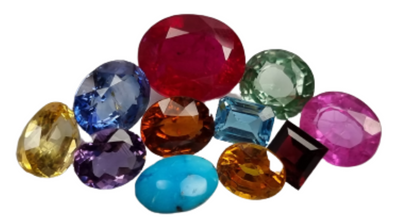Minerals
The word minerals means different things to different people. In ancient times, people divided all things on earth into the animal, vegetable, or minerals kingdom, so a minerals was any natural inorganic substance. Today, dieticians use the term to refer to nutritional elements such as calcium, iron, or sodium, while miners often use it for anything they can take of a ground including coal, sand, or gravel. Mineralogists and geologists of the twentieth century developed a more specific definition. Minerals are chemical compounds that are normally crystalline and form by geological process. They must also have a well defined chemical composition. For now it is sufficient to know that crystalline means “having an orderly and respective atomic structure,” and well defined means “varying within limits.” In the past a substances was not considered a mineral if it was a result of an organic process. Today however that part of definition has been dropped by some people who consider biogenic crystalline substances such as calcium phosphate(apatite) in bones or teeth, or calcium carbonate(calcite) in shells, to be minerals. Mineralogists have named and described more than 3000 minerals, they discover about 50 more each year.

Minerals
Many mineral related substances exist but do not fit the definition for one reason or another(such as coal, opal, oil and mercury, these are not minerals because they are not crystalline,oil and mercury also flunk the definition of mineral because they are liquids). Synthetic diamonds and rubies, for example, are not considered true minerals because they are not natural. Ice is a mineral, but its liquid counterpart, water, is not. Refined sugar is crystalline but is not considered a mineral because it is a human made and organic. Window glass made mostly from quartz, is not a mineral because it is not crystalline. The rust that forms on our cars is not considered a minerals, although the mineral goethite has nearly the same composition and properties. For historical reasons, elementary mercury is considered a mineral, even though it is liquid at normal temperatures.
Two major factors set most minerals apart from other crystalline materials, time and temperature. Many minerals form at high temperatures, and many form over long periods of time. Igneous and metamorphic minerals grow at temperatures hundreds or even 1000 degree C (3,630 degree F) hotter than normal earth surface conditions. Their crystallization and metamorphism may take millions of years. Sedimentary minerals, while not forming at high temperatures, often crystallize or recrystallize over long periods of time. High temperatures and long periods of time lead to highly ordered crystal structures that synthetic and organic processes cannot normally imitate. Scientists can make synthetic gems in the laboratory, many of these are beautiful and valuable. However, if we examine the fine details of their structures, we find they are generally not well ordered as their natural equivalents. In addition, there are many subtle differences between minerals and their synthetic or organic counterparts.




